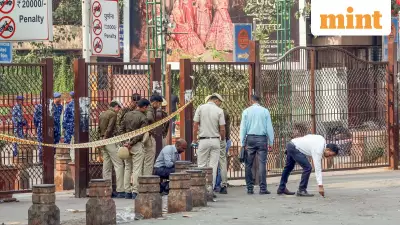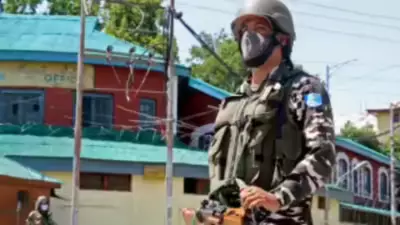
With just two days remaining until the vote counting for Bihar's assembly elections, the traditionally quiet town of Madhubani has transformed into a vibrant hub of political forecasting and analysis.
The District's Political Landscape
Madhubani district, famous for its exquisite Mithila art and active rumor circuits, now finds its 10 constituencies at the heart of intense political discussions. These constituencies—Benipatti, Bisfi, Madhubani, Harlakhi, Jhanjharpur, Phulparas, Khajauli, Babubarhi, Rajnagar and Laukaha—are witnessing passionate debates about which political alliance will emerge victorious in the battle for Bihar's 243 legislative seats.
The state completed its voting process yesterday, achieving a remarkable 63.8% voter turnout—the highest ever recorded in the district's electoral history. Across Madhubani, voter enthusiasm was clearly visible with long queues forming at rural polling stations, particularly among women voters, all conducted under strict security arrangements.
Exit Polls vs Ground Reality
According to exit polls, the ruling NDA alliance appears positioned for a comfortable victory over the Mahagathbandhan opposition coalition. Meanwhile, Prashant Kishor's Jan Suraaj party, which contested all seats in the state, is projected to make modest gains of 5-10 seats, potentially influencing outcomes in closely contested constituencies.
However, in Madhubani's bustling streets and local gathering spots, formal predictions take a backseat to raw, unfiltered political conversations. Since Tuesday evening, as polling nearly concluded, regular participants at these local 'addas'—a diverse group including retired teachers, shopkeepers, auto-rickshaw drivers, and minor party workers—have been gathering with their notebooks, WhatsApp messages, and anecdotal evidence to support their electoral predictions.
Tea Stall Democracy in Action
These lively sessions, expected to continue until Thursday evening before Friday's vote counting at the R K College counting center, provide fascinating insights into local political sentiment. One elderly participant, Kavi Ji, confidently declared between sips of tea: "NDA's grip on Jhanjharpur is ironclad—Nitish's welfare schemes have secured the support of Yadav and EBC communities." He even scribbled calculations on a tissue paper projecting a 50,000-vote margin for JD(U) incumbent Nitish Mishra.
Across from him, advocate Basu Babu countered sharply: "Women voters are furious over rising prices. Mahagathbandhan will sweep Phulparas and Babubarhi—Tejashwi's youth employment promise has sealed the deal." He cited a viral social media reel with 2,000 local views as convincing evidence.
The discussions grew more animated when young tech professional turned activist Ram Krishna, wearing a Jan Suraaj cap, insisted that Kishor's padyatra had significantly eroded NDA's support base in urban areas like Madhubani town. "I have insider data from 50 polling booths—we're winning Laukaha by 8,000 votes!" he claimed, sharing detailed booth-level spreadsheets that conveniently supported his narrative.
These gatherings, often extending until evening, represent more than casual conversation—they capture Madhubani's political pulse. The tea stall owner Guddu, skilled at refilling glasses during heated arguments, maintains neutrality while occasionally contributing his own observations: "Last night, a truckload of EVMs passed by. Mark my words, surprises await."
District-Wide Political Fervor
Fueled by endless tea refills at ₹10 per cup, these discussions meticulously analyze caste dynamics—Yadav versus Kushwaha communities, upper caste inclinations toward NDA, and potential vote splits in triangular contests. Similar enthusiasm grips tea shops across the district.
In Bisfi markets, RJD supporters cluster together predicting a Mahagathbandhan resurgence while blaming NDA for unemployment issues. Rajnagar's youth forums buzz with Jan Suraaj excitement, while Khajauli elders recall past electoral surprises. Social media amplifies these conversations, with local groups generating "exclusive" booth data that rivals professional surveys in creativity.
Political experts, however, advise caution regarding such informal analysis. Hitendra Thakur, known locally as Nunu Babu, commented: "Tea-stall analytics thrive on bias and hope. Nevertheless, they reflect genuine ground realities—concerns about employment, inflation, and flooding that formal exit polls might overlook." Indeed, the potentially surprising results from certain constituencies in the district could determine the final tally, and these informal gatherings might unintentionally predict unexpected outcomes.
As November 14 approaches, Madhubani waits with anticipation. For now, the district's tea stalls and similar gathering places function as unofficial war rooms, where democracy brews one cup at a time—complete with claims, counterclaims, and spirited debate.





